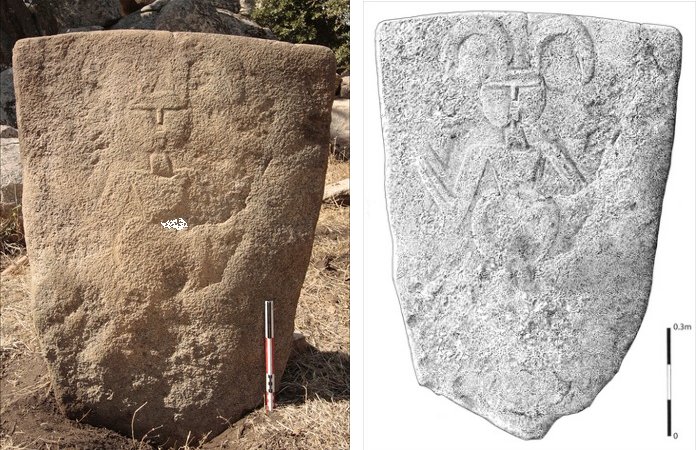Jan Bartek – AncientPages.com – About 6,000 years ago someone carved a mysterious goat-like figure on the Balchiria Stelae in Corsica.
It’s a design that is unlike anything seen in the Western Mediterranean at this time. What were ancient people trying to tell us when they made this puzzling engraving? Whom does it depict?

Left: Engraved Balchiria stela. Credit: F. Leandri – Right: Engraved stela drawing. Credit: R. Picavet
Corsica is an ethnically Italian island which has belonged to France since 1768, but there is archaeological evidence this beautiful place has been occupied for thousands of years
Many ancient structures found on Corsica are mysterious, and so is even the island’s name. It’s unknown why the island is called Corsica. Perhaps the name comes from ancient Greece where the island was known as Kalliste, Corsis, Cyrnos, Cernealis, or Cirné.
Corsica Was Occupied By Many Ancient Civilizations
During its long prehistory, Corsica has experienced many invasions and all ancient civilizations have left a legacy on the island. Phoenicians established numerous colonial cities along the coasts of the Mediterranean, and Carthaginians occupied Corsica for a short period. Later, Etruscans made claims on the land and in 238 B.C. Corsica became a province of the Roman Republic.
During the Middle Ages, Corsica was invaded by the Vandals and the Ostrogoths, but the Byzantine Empire recovered the island and it became part of the Kingdom of the Lombards.
Struggles to claim Corsica as its own continued for many years, and so did attempts to gain independence. Finally, Corsica fell into the hands of the French.







